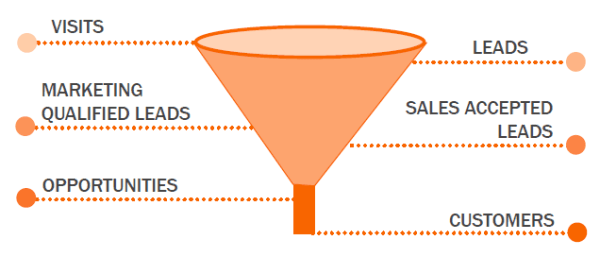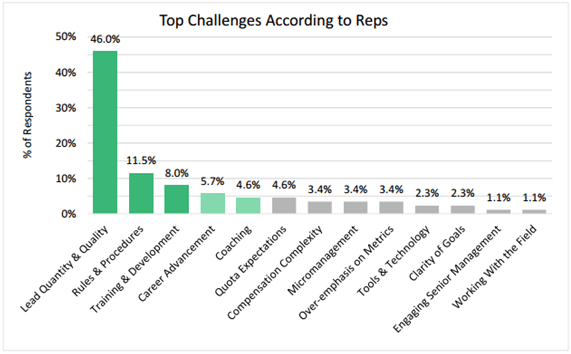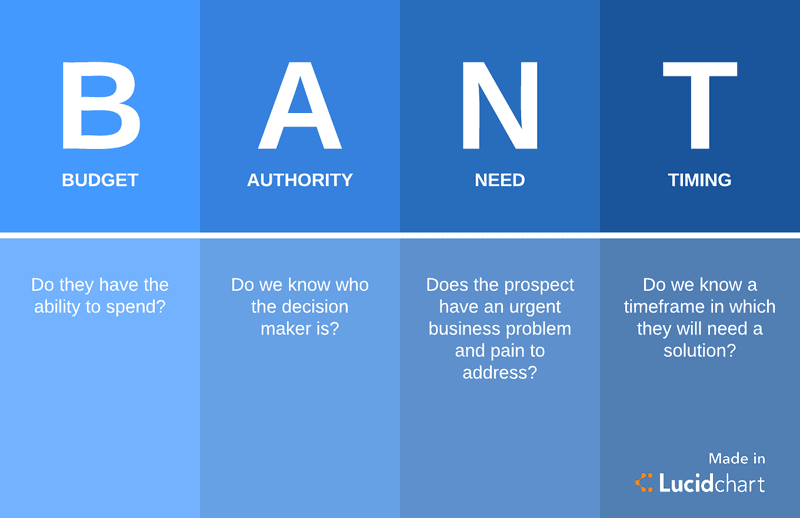Kwalificatie van leads: Hoe uw B2B-leads te kwalificeren en uw verkoopproces te verbeteren
Masterclass verkooppijplijn: Deel vijf

You’re starting to warm up your leads, booking demos and running sales meetings. But how do you know a lead is worth the effort or whether the best course of action is to nurture a lead after your first meeting? That’s where lead qualification comes in.
This post is Part Five in a new Masterclass series on how to build your sales pipeline. Building a strong sales pipeline is the #1 key to sales success. That’s why we created this indispensable step-by-step guide, to teach you how to build your pipeline the right way.
– Jeroen Corthout, Co-Founder Salesflare, an easy-to-use sales CRM for small B2B companies
In this fifth part of the series, we’ll be explaining the concept of lead qualification, why it’s so important for B2B sales and how you can qualify your leads in the best way.
1. Wat is leadkwalificatie?
Leadkwalificatie verwijst naar het proces waarbij wordt bepaald of een prospect in je klantendoelprofiel past, een kans heeft om klant te worden en vooral een kans heeft om een succesvolle, langdurige klant te worden.

2. Waarom is leadkwalificatie belangrijk?
Imagine you run a marketing campaign on Facebook and LinkedIn to generate leads. Apart from the campaigns you run, you also receive a steady influx of organic leads from your website. In total, you end up with a list of about 100 people who seem interested in what you’re offering.
Hoe weet je wie van hen jouw klanten voor de lange termijn worden?
Je zou natuurlijk kunnen beginnen met te kijken naar de allereerste lead die je hebt gegenereerd, maar tegen de tijd dat je bij de laatste bent, is het risico groot dat je de kans hebt gemist om contact te leggen met iemand die op dat moment zeer gemotiveerd was om je product te gebruiken.
Zoals data suggereert, kwalificeren slechts 25% van de leads zich als ideale klanten voor een bedrijf en maar liefst 75% daarvan converteren zelfs nooit. Hetzelfde onderzoek stelt ook dat ongeveer 73% van de leads die bedrijven online genereren niet verkoopklaar zijn en dat ongeveer 50% gekwalificeerd zijn, maar niet bereid zijn om te kopen.
Simpel gezegd leidt het negeren van leadkwalificatie tot:
1. Verspilde tijd
If you’re not qualifying your leads before booking your sales meetings, you’ll end up wasting a lot of time following up with those which aren’t a good fit for your company.
For instance, you might end up chasing a prospect that doesn’t have the budget for what you’re offering. Even if you run multiple sales meetings with this lead, you’ll never be able to close the deal.

2. Kansen verliezen
Some of your best leads may require more effort and lead nurturing to convert. If you’re wasting time following up every lead you generated, you’re going to end up losing opportunities.
The market-fit leads get lost when you wait too long with following up or don’t follow them up at all because you were trying to convert a cold lead. If you don’t know who is worth the effort or who is your high-value prospect, you’ll just lose your chance to sell to them at the right time.
3. Closing deals that don’t last
Approaching all the leads in your pipeline might result in a few sales. But chances are you’ll end up closing more short-term deals hereby leaving more lucrative long-term deals on the table.
This often happens when you’re giving commission or setting targets for the sales people. They then focus on closing deals that will only give short-term value for both the customer and your company. This can partly be solved by creating clear qualification criteria, so that sales people don’t focus on leads that don’t fit your ideal customer persona.
De nadelen van het niet investeren van tijd en middelen in leadkwalificatie zijn glashelder. Dat gezegd hebbende, zijn er nog steeds 46% bedrijven die het een uitdaging vinden.

According to Steven Tulman, about 67% of your lost sales are caused by leads that weren’t qualified.
Hoe kwalificeer je dan effectief je leads op zo'n manier dat je verkoopaanpak geoptimaliseerd blijft en gericht op marktgroei?
3. Leadkwalificatiemethoden voor verkoop
Hoewel het verzamelen van alle mogelijke gegevens over je lead de manier is om te gaan, is er een proces dat je moet volgen om ervoor te zorgen dat je alle juiste gegevenssets hebt om een lead te kwalificeren. Dit is de reden waarom IBM het BANT framework heeft gecreëerd.

Let’s walk you through the framework, how it works and why completing each step here is important.
1. De middelen van je voorsprong identificeren (budget)
The very first parameter on which you should be qualifying a lead is whether they will be able to afford the solution you’re offering or not. Reaching out to a lead that does not have the budget for your solution, hoping they will set some aside, is a shot in the dark that may end up wasting time and effort.
A few important questions to identify a lead’s budget for your solution:
- Hoeveel geven ze nu al uit aan het probleem dat je aanpakt?
- Uit wiens budget komt dit (verkoop, marketing of andere)?
- Hoeveel zou het hen kosten om zelf een oplossing te bouwen?
- Hoeveel verliezen ze door het probleem te negeren?
- What’s the ROI they are hoping to see?
- Wat is het vastgestelde budget voor de aankoop?
- Speelt de prijs een grote rol in hun aankoopbeslissing?

2. Besluitvorming (Autoriteit)
In our previous post we mentioned how there are on average 6.8 people part of each B2B sales deal. That is why it’s important for you to know if you’re talking to the right person. If you’re not, your opportunity is not that qualified – unless of course you manage to get in touch with the right person through the current person or through further networking.
A couple of questions that will help you identify if you’re speaking to the right person:
- Welke rol speelt de leiding in de besluitvorming?
- Hoeveel mensen/afdelingen zijn erbij betrokken?
- Wie neemt de uiteindelijke beslissing?
- Hoe neemt het bedrijf/de afdeling een beslissing?
- Welke zorgen zal de besluitvormer hebben?
- Wie wordt de contactpersoon voor de implementatie van of het toezicht op het product?
- Wanneer willen ze het product gaan gebruiken?
- Op welke maatstaven moet je succes evalueren?
3. Inzicht in behoeften (Need)
De volgende stap is het begrijpen van de behoeften van je prospect. Je moet proberen te achterhalen wat hun bedrijfsdoelen zijn, voor welke uitdagingen ze staan en hen dan de oplossingen bieden die jij hebt.
After all, a successful sales meeting is when you’re able to understand the prospect and fulfill their needs. But to do so, you need answers to the questions below:
- Hoe hebben ze van je bedrijf en je product gehoord?
- Wat zijn de grootste uitdagingen voor de leiding?
- Met welke uitdagingen wordt het bedrijf geconfronteerd?
- Are any of the business’ problems urgent?
- Wat zijn de doelen die ze willen bereiken?
- Hoe komen hun doelen jou ten goede?
- Wat motiveerde hen om naar oplossingen te zoeken?
- Welke eigenschappen moet de oplossing volgens hen hebben en waarom?
4. Timing meten (Timing)
Be it the budgets, approvals or comparisons, there can be multiple factors that influence the buying process. In order to keep your sales processes optimized, it is important to understand the prospect’s place in the buying journey and their timeline leading up to making the purchase.

Een prospect die weet dat hij uw oplossing over 3 maanden nodig heeft, is beter dan een prospect die zegt dat hij het misschien ooit nodig zal hebben. Op basis van je verkoopproces en bedrijfsdoelen moet je beslissen welk tijdsbestek voor jou acceptabel is.
A few questions that will help you identify the prospect’s time frame:
- Met welke andere problemen/uitdagingen worden ze geconfronteerd?
- What’s the priority on the issue you are solving?
- Wanneer zijn ze van plan het probleem dat jij oplost aan te pakken?
- Overwegen ze andere oplossingen?
Now to take your lead qualification process a step further than BANT…
5. Klantprofilering (Bonusstap!)
Here’s where you put your defined target audience and ideal customer personas to good use. Compare your leads with the characteristics you listed in the persona to see if they match your ideal customer.
Een paar belangrijke vragen waar je een antwoord op moet hebben:
- Hoe goed komt de lead overeen met je ideale klantpersona?
- In welke bedrijfstak zitten ze?
- Hoe lang bestaat het bedrijf al?
- Wat is de omvang van de organisatie in termen van klanten, werknemers en omzet?
- Zijn ze gevestigd in je doelmarkt?
- What’s the ideal use case of your product for them?
- Waarom passen ze niet bij jouw product? (Tekenen waar je op moet letten)
Je vraagt je misschien af of je prospects bereid zullen zijn om alle bovenstaande vragen te beantwoorden. De realiteit is dat niet alle vragen beantwoord zullen worden en daarom moet je ze op een intelligente manier bundelen.

Make sure your questions don’t give off the impression you haven’t done your research. You don’t want your lead to feel negatively towards you, nor for them to be confused or overwhelmed at any stage of the sales process.
4. Verkoop stimuleren door leadkwalificatie
Leadkwalificatie volgt geen standaardaanpak. Elk bedrijf heeft andere behoeften en een andere markt om op in te spelen, die in zijn eigen tempo verandert.
Daarom moet je leadkwalificatieproces meegroeien met de veranderende marktbehoeften en bedrijfsdoelen. Het zal je ook helpen om je pijplijn gezond te houden, veranderende consumententrends te voorspellen en concrete voorspellingen te doen die kunnen worden gebruikt om verkoopprocessen te optimaliseren voor hogere conversies.
Denk eraan, kwalificeer je altijd voordat je verkoopt.
Ready to start qualifying your leads? Well, don’t forget to tune in next week for Part Six in our Sales Pipeline Masterclass: How To Nail Sales Pipeline Management Like A Pro. Need a refresher? Go back and read Part Four: How To Book And Run Sales Meetings Like A Pro.

We hopen dat je deze post leuk vond. Als je het leuk vond, vertel het dan verder!
👉 Je kunt @salesflare volgen op Twitter, Facebook en LinkedIn.
- 4 B2B verkoopstrategieën die u gegarandeerd meer klanten opleveren - 23 januari 2024
- Hoe B2B-bedrijven verkooptools kunnen integreren - 18 april 2019
- Hoe B2B-bedrijven klantgegevens kunnen automatiseren - 11 april 2019
